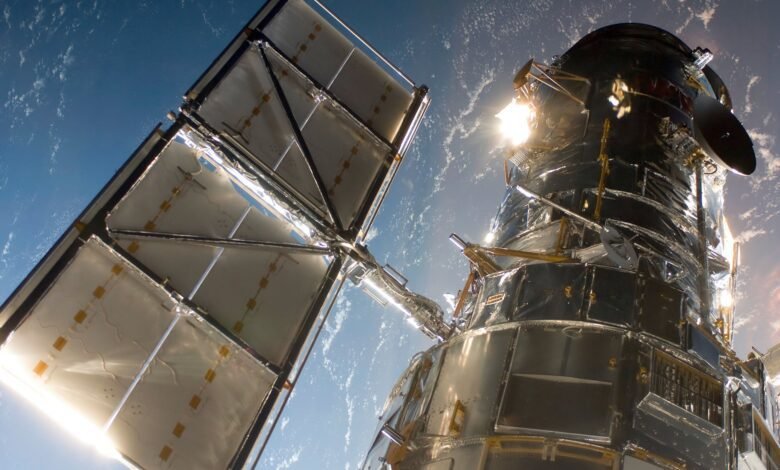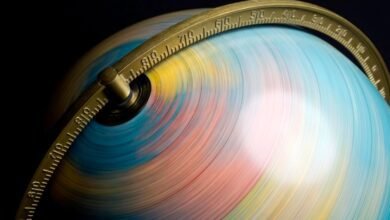How ‘Safe Mode’ Protects Space Telescopes Like Hubble and TESS

What could bears and space telescopes have in common? Last month, both the Hubble Space Telescope and the Transiting Exoplanet Survey Satellite (known as TESS) ended up in a kind of hibernation. When faced with some kind of threat, these telescopes shut down all non-essential systems, doing only the bare minimum to stay alive and avoid further damage if possible – much like how a bear survives a long winter.
For telescopes, its hibernation is known as “safe mode”. Instead of being endowed with a natural instinct for self-preservation, however, a telescope’s routines for entering safe mode are written into its code by the engineers who design them.
Safe mode is “exactly what it sounds like,” explains Sam Factor, an astronomer at the University of Texas at Austin. “When the telescope encounters a problem from which it cannot automatically recover, it shuts down all non-essential systems to keep the delicate scientific instruments safe.” This includes pointing your solar panels at the Sun to ensure a constant supply of power and pointing your antenna directly at the Earth to ensure you can receive instructions on what to do next.
Safe mode “is a state that will keep the telescope alive and hopefully not make anything worse while you wait for ground controllers to evaluate and resolve the issue,” adds Factor. “Think of it as how you leave the house when you go on vacation in the winter. All the lights are off, the computer is off, but the heat is still on at a minimum level to keep the pipes from freezing and the refrigerator to keep running. When you get home, everything should be ready to go.”
Several situations can cause a telescope to enter safe mode. Sometimes a sensor breaks, producing bizarre readings that make it seem like the telescope is faulty, but in fact everything is fine except that sensor. Other times, a hardware component wears out and breaks, or the software encounters an unexpected bug.
[ Related: Astronomers fight to save a major X-ray space telescope ]
Some issues are particularly unique to space. For example, “in the harsh environment of space, a high-energy particle known as a cosmic ray could strike and capsize a memory chip, requiring a reboot to restore functionality,” says Claire Andreoli, communications officer at NASA Goddard. . If intense space weather is predicted, the telescope’s operations team may even purposely put it into safe mode to protect the delicate electronics while it weathers the solar storm.
“Every spacecraft is programmed to deal with these scenarios,” adds Andreoli.
Each NASA spacecraft also has a dedicated team responsible for its operations. When a telescope goes into safe mode, its team must collect as much information as possible from the sensors and computers onboard the telescope to determine the true problem. As for telescope repair, all repairs must be done remotely – some telescopes, like JWST, are simply too far away for astronauts to repair, and others, like Hubble, have not been serviced for years after the shuttle program ended. space. This means that scientists must be creative with software solutions, whether eliminating bugs in the code or introducing new snippets of code to solve hardware failures.
Often, safe mode incidents are just a part of a telescope’s life – who doesn’t need a trip to the doctor every now and then to make sure things are working properly after a health scare? edge. Plus, any time spent in safe mode is time wasted doing science. Space telescope observations are scheduled months in advance, so a disruption in operations changes this carefully planned schedule.
“Anything that should be observed is postponed until a later time,” explains Factor. Typically this means that planned observations will still happen as planned, just with a delay, but “if it takes too long to repair the telescope, this could mean that observations will be lost if, for example, your target is time sensitive or is in a region of the sky that can no longer be observed because of where the sun is,” he adds.
[ Related: Where do all those colors in space telescope images come from? ]
Both Hubble and TESS entered safe mode on April 23 and have since recovered from their health scares.
The Hubble incident was due to a problem with one of the spacecraft’s gyroscopes, which is needed to correctly point the telescope at its astronomical targets. This isn’t the first spacecraft to deal with an aging gyroscope; The planet-hunting Kepler Space Telescope suffered a gyroscope failure in 2013, and the Hubble team has been aware of the possibility of such a failure for years — so aware, in fact, that six new gyroscopes were installed on Hubble by astronauts in its final maintenance mission in 2009 to avoid problems. As of April 30, three of these gyroscopes were working, including the one that caused the recent safe mode event (and a similar incident in November 2023). Fortunately, if this troublesome gyroscope strikes again, NASA has a plan to get Hubble working with just one of the three parts operational.
TESS also fell victim to this finicky hardware. One of its reaction wheels (a type of gyroscope) malfunctioned after a failed restart from a previous incident on April 8. This issue has been fixed, with operations resuming on May 3rd, but the team is still trying to figure out what caused the first Safe Mode event on April 8th.
Keeping a spacecraft alive at a distance is a big challenge, but safe mode gives mission teams some time to figure out what’s wrong before more damage can happen – like a bear staying inside a nice, warm cave instead of run into a blizzard, or go to the doctor as soon as you notice a new stab of pain, rather than waiting until you need to go to the emergency room. Of course, it’s always a little stressful when something goes wrong, but at least for now both Hubble and TESS are safe, healthy and ready to do more science.




